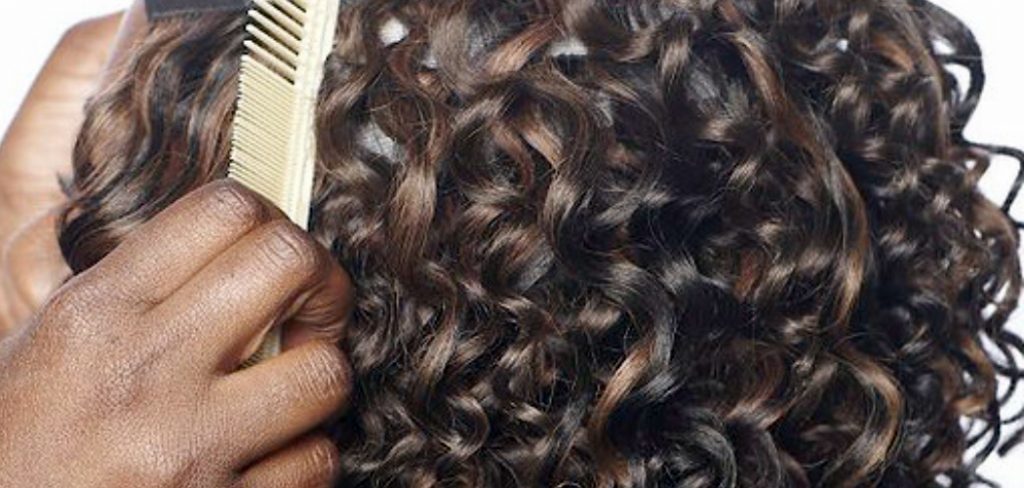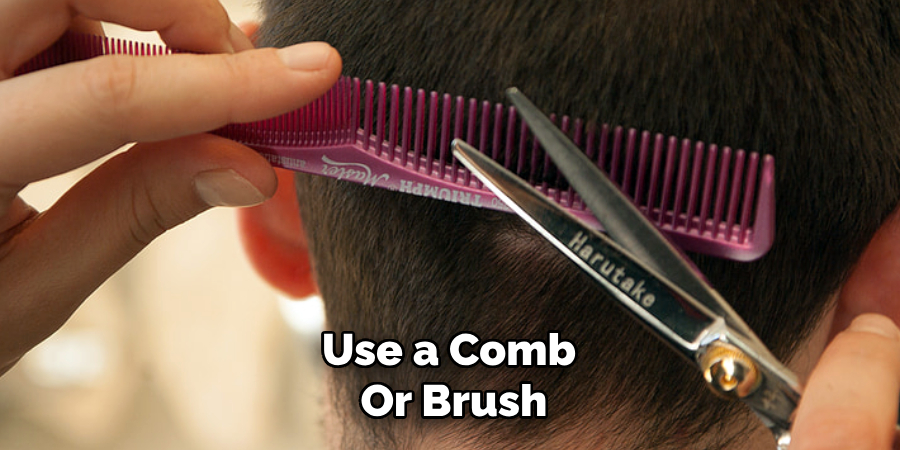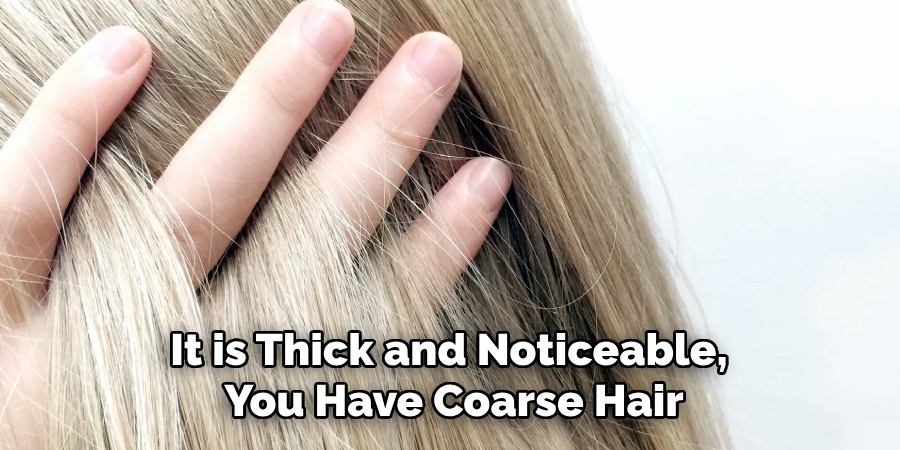Are you familiar with the concept of hair density? It refers to the number of hair strands on your scalp per square inch.
Hair density refers to the number of hair strands present per square inch of the scalp, and understanding your hair density is essential for proper hair care and styling. Measuring hair density can help you choose the right products, treatments, and techniques best suit your hair type. Assessing density provides valuable insights, whether you’re trying to address thinning hair, maximize volume, or simply understand your hair better.

This guide on how to measure hair density will walk you through simple, effective methods to measure your hair density and tailor your hair care routine accordingly. Let’s get started!
What Are the Benefits of Measuring Hair Density?
Before we dive into the how-to, let’s explore why measuring hair density is important:
- Product Selection: Different hair densities require different products for optimal results. For instance, if you have fine hair, using heavy hair products can weigh down your locks and make them look flat.
- Styling Techniques: The thickness of your hair also determines which styling techniques will work best for you. Knowing your hair density can help you choose the right styling tools and methods to achieve your desired look.
- Hair Loss or Thinning: Changes in hair density could signal a potential health issue, such as hormonal imbalances or nutrient deficiencies. By regularly measuring your hair density, you can monitor any changes and address them promptly.
- Understanding Your Hair Type: Knowing your hair density is essential to understanding your hair type. It helps you understand how much volume and fullness your hair can naturally achieve, making it easier to manage and style.
What Will You Need?
To measure your hair density, you will need:
- A comb or brush
- A measuring tape or ruler
- A mirror (or someone to help)
Once you have these items, you can proceed with the following methods.
10 Easy Steps on How to Measure Hair Density
Step 1: Comb Your Hair
Start by ensuring that your hair is clean and dry, as wet or greasy hair can affect the measurement accuracy. Use a comb or brush to detangle your hair, removing any knots or tangles gently. This will make it easier to separate sections and accurately assess your hair’s density. Make sure to comb your hair in its natural direction and ensure it is evenly distributed across your scalp. Properly combing your hair is an essential first step to preparing for the measurement process.

Step 2: Divide Your Hair into Sections
Using the comb, divide your hair into small, manageable sections. You can use clips or hair ties to keep other sections out of the way while working on a specific area. Focus on one section at a time to avoid overlap and ensure accurate measurement. Start with a section at the front, top, or side of your head, depending on what is most comfortable for you. Sectioning your hair allows for better visibility and precision when measuring.
Step 3: Measure Hair Density
To measure the density of your hair, take a small section of the hair you divided and hold it between your fingers. Observe the amount of scalp that is visible through the section of hair. If your scalp is easily visible, you likely have low-density hair. If you can see some of your scalp but not entirely, your hair density is medium. If you can hardly see your scalp, then you have high-density hair. Repeat this process for each section to get a consistent and accurate assessment of your overall hair density.
Step 4: Measure Hair Diameter
To determine the diameter or thickness of your hair strands, take a single strand from the section you are working on. Place the strand on a flat, light-colored surface or hold it against white paper. Observe the strand closely—if it appears very thin and is difficult to see, your hair has a fine diameter. If the strand is moderately visible, it likely has a medium diameter. If it is thick and noticeable, you have coarse hair. Repeat this process with hair strands from different sections to ensure a comprehensive assessment.

Step 5: Assess Hair Porosity
Hair porosity refers to your hair’s ability to absorb and retain moisture, which is crucial in determining the best products and care routine. To check your hair porosity, take a clean strand of hair and place it in a glass of water. Allow it to sit for 2-4 minutes. If the strand floats on the surface, your hair has low porosity, which resists moisture absorption.
If it sinks slightly but remains in the middle of the water, your hair has medium porosity, indicating a balanced moisture-retaining ability. If the strand sinks to the bottom, your hair has high porosity, which suggests it absorbs moisture quickly but may also lose it just as fast. Repeat this test with strands from various sections of your hair for an accurate evaluation.
Step 6: Identify Your Hair Elasticity
Hair elasticity refers to the hair’s ability to stretch and return to its original length without breaking. This characteristic helps determine your hair’s strength and condition. To test your hair elasticity, take a single strand of wet hair and gently stretch it. If the hair stretches slightly and returns to its original length, it has good elasticity, signifying healthy hair. Hair that stretches and breaks or does not stretch has low elasticity, indicating damage or dryness. Perform this test with strands from different sections to thoroughly understand your hair’s overall elasticity.
Step 7: Determine Your Hair Density
Hair density refers to how closely individual strands are packed together on your scalp. Understanding your hair density helps you choose the proper styling techniques and products. To check your hair density, part your hair in the middle and observe your scalp under natural light. If your scalp is easily visible, you have low density. If your scalp is somewhat visible, you have medium density. If your scalp is barely visible at all, you have high density. Examining multiple sections of your scalp will provide a more accurate assessment of your hair density.
Step 8: Assess Your Hair Porosity
Hair porosity measures your hair’s ability to absorb and retain moisture. Knowing your hair’s porosity is essential for selecting the proper moisturizing and conditioning products. To test your hair porosity, take a clean strand of hair and place it in a glass of water. If the strand sinks quickly, your hair has high porosity, which absorbs moisture quickly but may struggle to retain it.
If the strand floats near the top, your hair has low porosity, indicating it resists moisture absorption. If the strand hovers in the middle, your hair has medium porosity, signifying a balanced ability to absorb and hold moisture. Conduct this test with strands from different areas for a comprehensive analysis.

Step 9: Keep Track of Your Results
Once you have completed all the steps, it’s time to record your results. Keeping track of your hair measurements, density, diameter, porosity, and elasticity will help you understand your hair better and refine your hair care routine. You can use a notebook or an app to keep track of your results and refer back to them when needed. Understanding your hair’s unique characteristics is crucial in choosing the right products and techniques for healthy and beautiful hair.
Step 10: Adjust Your Hair Care Routine
Now that you better understand your hair’s characteristics, you can make informed decisions about your hair care routine. For example, using volumizing products and styling techniques may be beneficial if you have low-density hair.
If you have high porosity hair, using deeply hydrating products and avoiding heat styling tools may help retain moisture. Continuously assessing and adjusting your hair care routine based on your results will promote healthy and beautiful hair. Remember to revisit this measurement process periodically, as your hair may change over time due to aging or hormonal changes.

By following these steps, you can accurately assess your hair type and determine the best ways to care for it.
5 Things You Should Avoid
- Using Dirty or Oily Hair: Attempting to measure hair density on unwashed or oily hair can lead to inaccurate results. Hair should be clean and free from products for the best measurement.
- Ignoring Consistent Lighting: Poor or inconsistent lighting can make it difficult to see and assess hair density properly. Always measure under uniform, bright lighting conditions.
- Skipping Different Scalp Areas: Measuring density from only one part of the scalp doesn’t provide a complete picture. Be sure to check multiple areas for accurate results.
- Using the Wrong Tools: Avoid using makeshift tools or imprecise methods. Use tools like a hair-parting comb or a density scale specifically designed for proper measurement.
- Comparing Without Context: Avoid comparing results to others without considering age, genetics, or hair texture. Hair density can vary greatly, and context is key to understanding your results.
Conclusion
Accurately measuring hair density is essential to understanding your hair’s unique needs and characteristics.
You can achieve reliable results by ensuring your hair is clean, using proper tools, and evaluating multiple scalp areas under consistent lighting conditions. Avoid common mistakes, such as comparing your density to others without context, as individual differences like genetics and age play a significant role.
By following these guidelines on how to measure hair density, you can gain better insight into your hair and make informed decisions about care and styling routines.
About the Author
Jane Hubbard is a passionate beauty expert with a wealth of experience in makeup, hair, and overall beauty techniques. After years of working as a hairdresser specialist, she followed her entrepreneurial spirit and started her own consultancy business.
Jane has always been driven by her desire to help others feel confident in their own skin, and she does this by sharing her knowledge, experiences, and practical beauty tips. Through her consultancy, she empowers individuals to embrace their unique beauty, offering tailored guidance that boosts both self-esteem and personal style.
Professional Focus
- Specializes in makeup, hairstyling, and beauty consulting.
- Provides personalized beauty advice, tips, and techniques to help individuals feel confident in their appearance.
- Dedicated to staying up-to-date with the latest industry trends and developments.
- Passionate about creating a comfortable and empowering experience for every client.
Education History
- University of Craft and Design – Bachelor of Fine Arts (BFA) in Woodworking and Furniture Design
- Woodworking Apprenticeships – Extensive hands-on training with skilled craftsmen to refine carpentry and furniture making techniques
- Online Courses & Masterclasses – Continued education in advanced woodworking techniques, design principles, and specialized tools
Expertise:
- Makeup artistry, hairstyling, and beauty consulting.
- Personalized beauty techniques to enhance confidence and self-expression.
- Educating clients on how to maintain their beauty routines at home.
